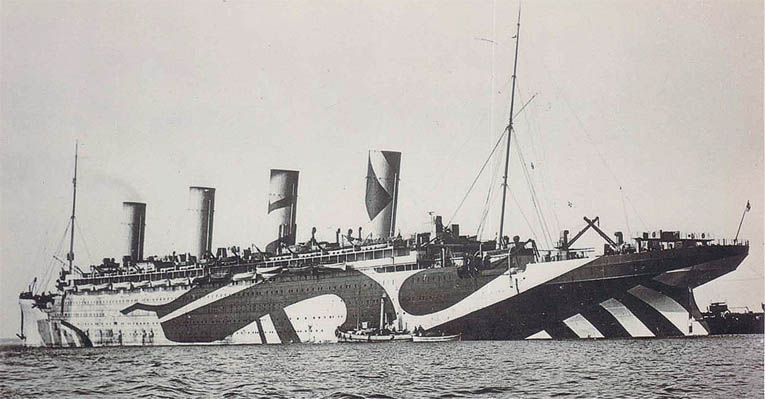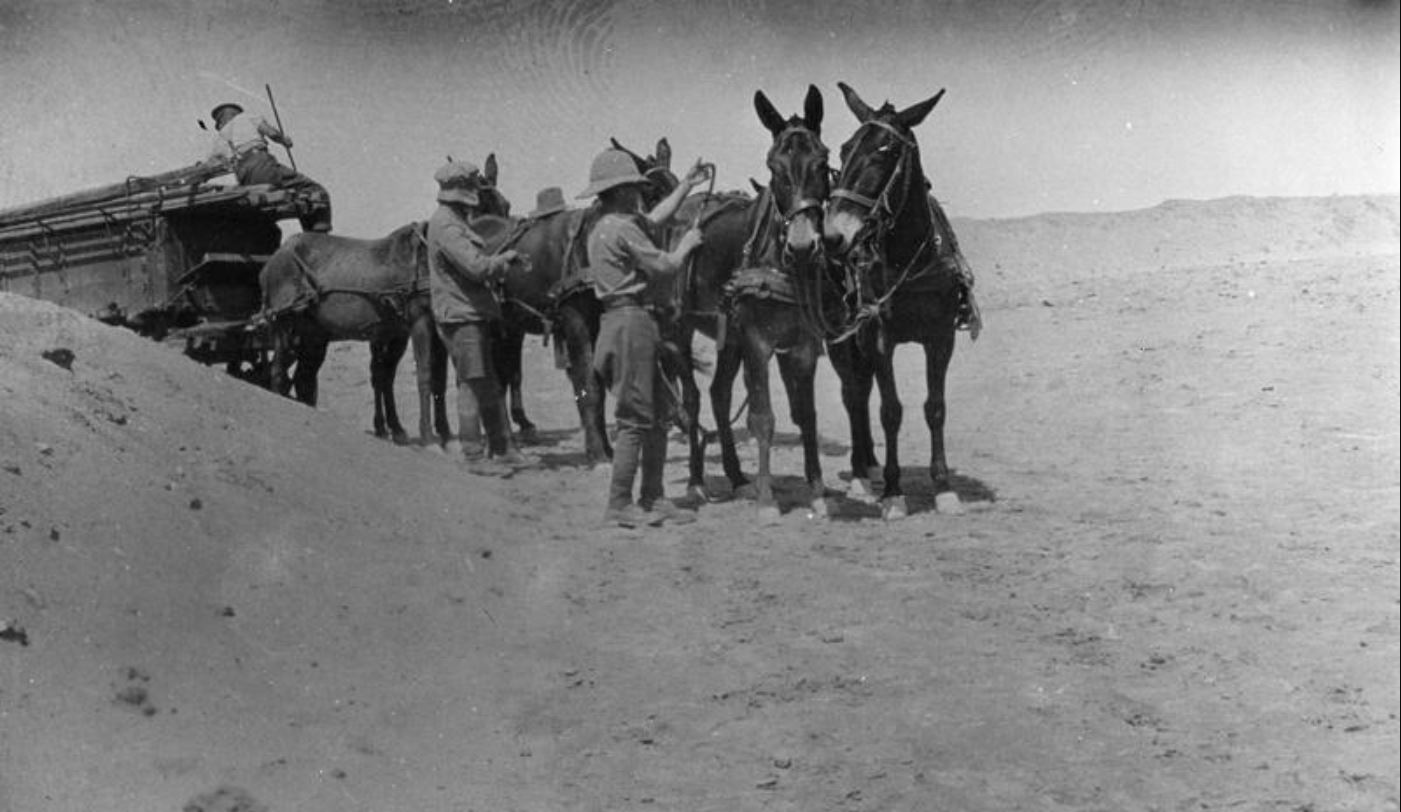Frederick Cousins was the second son of Frederick and Mary Cousins. He was born in Melton, Suffolk, on 27th September 1893. In 1911, he was 17 years old and working as a grocer’s apprentice.
Frederick enlisted in the 1st Suffolk Yeomanry Battalion on 3rd May 1915 while the battalion was based in Woodbridge as part of the Eastern Mounted Brigade. The Yeomanry were in Leiston when they received mobilisation orders on 23rd September and they left immediately by train for Liverpool. From there, they boarded the SS Olympic, sister ship to the Titanic, for the journey to Gallipoli. On 29th September, they passed Gibraltar and entered the Mediterranean. And, two days later, they had a close encounter with a German submarine.
The RMS Olympic painted in dazzle camouflage while being used for troop transportation.
Major Edward Cadogan of the Suffolk Yeomanry recorded the event in his diary:
“I was coming up on deck, I heard a shot from one of our gunner and shouts of “Submarine!” Then the alarm sounded; a series of short hoots, which froze the marrow in one’s bones. Soon after the signal was given, the Olympic began to keel at a terrible angle so much so that I began to wonder if we had been hit and what I had thought was our gun might have been a torpedo. But as a matter of fact, what had happened was the Captain was trying to turn his ship on a sixpence. I dare say the manoeuvre saved us from a great disaster, as the submarine, after firing two torpedos at us, passed to starboard.”
The ship arrived at the Greek island Mudros on 2nd October, much earlier than expected and the authorities were not ready for the men to disembark. It was another eight days before they were landed at Anzac Cove on the Gallipoli peninsula. On the 8th December 1915, the ill-fated Gallipoli campaign came to an end for the Suffolk Yeomanry and they were evacuated to Egypt, landing in Alexandria.
The Suffolk Yeomanry’s time in Egypt was spent bolstering the Mediterranean Expeditionary Force’s presence in order to protect the Suez Canal from the Turkish forces. It was on 5th January 1917 that the Battalion underwent a re-organisation and became the 15th (Yeomanry) Battalion Suffolk Regiment.
Suffolk Yeomanry transport at Suez in 1916 where they had been posted after the withdrawal from Gallipoli.
(IWM Q12862)
In April 1917, they were on the move again and this time headed for the fighting in Palestine. Frederick, however, was not with them as, on 26th May, he was formally transferred to the 20th (Northern) Battalion Rifle Brigade. They remained in Egypt either providing guards for prisoners of war and internment camps or protecting vulnerable positions on the Nile delta. Frederick stayed with this battalion until 18th March 1918, when he was transferred to the Army Service Corps.
Frederick returned to England shortly afterwards due to illness and was discharged from the army on 20th April 1919 as “no longer physically fit to be a soldier”. For his war service, Frederick received the 1914-15 Star, the British War and Victory Medals and the Silver War Badge.
In 1920, Frederick married Elsie Woodhouse and they had four children. In 1939, Frederick and family were living in Freehold Road, Ipswich, and he was working for himself as a dairyman.
